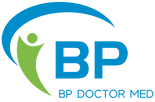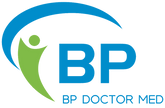Smart Home Blood Pressure Monitoring: Why It's Vital for Heart Health

Understanding Your Circulatory Health
Blood pressure represents the force exerted by circulating blood against arterial walls. This critical vital sign fluctuates throughout the day, influenced by factors like physical activity, stress levels, and dietary choices. Maintaining optimal blood pressure is essential because elevated levels force your heart to work harder, potentially damaging blood vessels over time.
Smartwatch Integration
Modern blood pressure smartwatches like the BP Doctor Med Pro provide continuous monitoring beyond single measurements, capturing:
- 24/7 pressure trends
- Activity-related fluctuations
- Sleep cycle impacts
- Personalized baseline establishment
Decoding Blood Pressure Categories
| Category | Systolic (mmHg) | Diastolic (mmHg) |
|---|---|---|
| Normal | <120 | <80 |
| Elevated | 120-129 | <80 |
| Stage 1 Hypertension | 130-139 | 80-89 |
| Stage 2 Hypertension | ≥140 | ≥90 |
| Hypertensive Crisis | ≥180 | ≥120 |
Approximately 47% of American adults have hypertension, yet many remain undiagnosed due to its asymptomatic nature.
Precision Measurement Techniques
Optimal Measurement Protocol
- Rest for 5 minutes in a seated position with back support
- Position your arm at heart level on a flat surface
- Use a validated smart blood pressure monitor with proper cuff size
- Take duplicate readings 1-2 minutes apart
- Record measurements in a digital health app
Smart Tracking Advantages
Advanced wearable technology enhances traditional monitoring by:
- Automatically logging readings to cloud storage
- Generating weekly/monthly trend reports
- Alerting to abnormal patterns
- Syncing data with healthcare providers
Why Home Monitoring Matters
Regular home blood pressure checks provide three key benefits:
- Early Detection - Identifies hypertension before symptoms appear
- Accurate Baselines - Avoids "white coat syndrome" in clinical settings
- Treatment Optimization - Helps doctors adjust medications precisely
Studies show home monitoring leads to 20% better hypertension control compared to clinic-only measurements.








